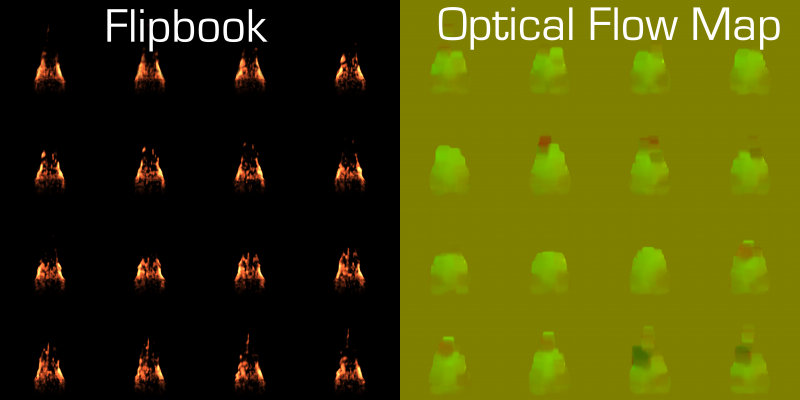Advanced Flipbooks
Published 13th June 2024 by Henry
The Advanced Flipbook material function is a significant improvement over the standard Unreal Engine flipbook function, designed to deliver ultra-smooth flipbook animations with enhanced performance and usability.
Key Improvements:
- Simultaneous Frame Blending + Optical Flow Maps: The Advanced Flipbook material function leverages both frame blending and optical flow maps concurrently. Frame blending alone can smooth out transitions between frames, but when combined with optical flow maps, the result is unparalleled. The optical flow maps capture the detailed motion of pixels between frames, allowing for more accurate and fluid animations. This dual approach ensures that even at very slow speeds, your animations remain smooth and realistic, eliminating the choppiness often encountered in standard flipbook animations.
- Organized Material Graphs: The material graphs within the Advanced Flipbook function are meticulously organized for easy readability and customization. This structured approach not only makes it easier to understand how the function works but also allows artists to make adjustments swiftly and efficiently. Whether you’re tweaking parameters for a specific project or exploring new animation techniques, the clear layout of the material graphs ensures a smooth workflow.
- User-Friendly Material Function: Designed with ease of use in mind. Its intuitive design means that artists can quickly integrate and utilize this function without needing extensive technical knowledge.
- Enhanced Performance: Performance is a critical factor in game development, and the Advanced Flipbook material function uses 10 fewer instructions than Unreal’s standard flipbook function. This reduction in computational overhead means that your animations can run more smoothly and efficiently, even on lower-end hardware. The improved performance not only enhances the visual quality of your game but also ensures a better overall experience for players.
Optical Flow vs Motion Vectors
Optical Flow captures the detailed motion of individual pixels between frames, providing a highly accurate and smooth representation of movement. Motion Vectors, on the other hand, track the movement of pixel blocks, often simplifying motion and resulting in less detailed animations. Optical flow offers superior fluidity and realism, making it ideal for high-quality animations.

How to use this function
TBD

Leave a Reply